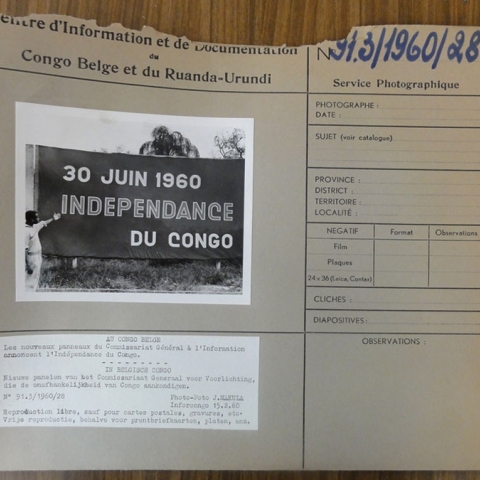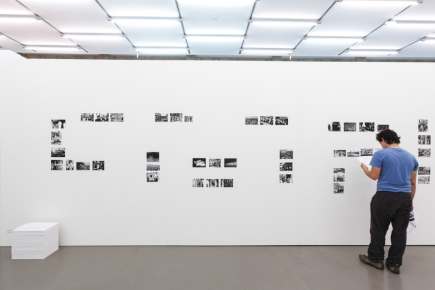Process
In 2009, I initiated a long-term research project and ongoing photo installation, Independence Day 1934-1975, around the collection and reproduction of archival photos from the first Independence Day ceremonies of over two dozen Asian and African nations. A key part of the work's concept is that the images come primarily from archives in the countries themselves. I am interested in examining how a given Asian or African nation state is preserving the foundational images of its own coming into being.
Independence Day 1934-1975 currently features archival photographs from Teen Murti Archives (India), National Archives of Tanzania, Mohamed Kouaci Archives (Algeria), National Museum of Syria, Sami Moubayed Archive (Syria), National Archives of Malaysia, Ghana Ministry of Information, Kenya Ministry of Information, Durham University (Sudan), Mozambique National School of Photography, National Archives of Indonesia, Kuwait National Oil Company, Cosme Dossa Archive (Benin), National Library of The Philippines, Rizal Library at Ateneo de Manila University (Philippines), Andre Zoungrana Archive (Burkina Faso), Presidential Archives Republic of Tunisia, National Library of Jordan, Royal Court Library of Jordan, Senegal Ministry of Communication, and anonymous sources.
In 2014-15, with the support of the Kamel Lazaar Foundation, I intend to continue the research in Gabon (Gabonese Republic), Mali (Republic of Mali), Morocco (Kingdom of Morocco), Maldives, Yemen and Cambodia.
Project Description
The first Independence Day, leading up to and including the formal ceremony, unfolds as a series of highly codified rituals and elaborate speech acts enacted across public and elite spaces. The swearing in of a new leadership, the signing of relevant documents, the VIP parade, the stadium salute, the first address to the new nation, are all supervised and orchestrated by the departing colonial power. The photographic material is strikingly similar despite disparate geographical and temporal origins as it reveals a political model exported from Europe and in the process of being cloned throughout the world. Presented as a photo installation, it emerges as a typology, poised somewhere between a grid and a storyboard, and unites two often distinct photographic traditions - the serial and the archival. A great deal of artistic and academic research has been done on both the colonial and postcolonial eras but this project aims to introduce a third, surprisingly neglected element into the debate - that 24 hour twilight period when a territory transforms into a nation-state.
Displaying the archive: between the grid and the storyboard
Between 2012 and 2014 Independence Day 1934-1975 has been exhibited in various contexts (CCA Wattis, Taipei Biennial 2012, Beirut Art Center). The current version of the work features 54 black & white photos, arranged according to a specific grid, around categories of events that emphasize the generic character of the ceremonies that took place across dozens of African and Asian countries. An accompanying handout presents the captions and countries of origin, some of which do not exist anymore, thus pointing at the fragile character of the depicted rituals.
During March - May 2015 the work will be the subject of a solo show at Betsonsalon in Paris. My aim is to include the new material I have researched with the support of the Kamel Lazaar Foundation and integrate some or all of the photos into the new installation.
About the artist

Maryam Jafri is an artist working in video, performance and photography. Informed by a research based, interdisciplinary process, her artworks are often marked by a visual language poised between film and theater and a series of narrative experiments oscillating between script and document, fragment and whole. She holds a BA in English & American Literature from Brown University, an MA from NYU/Tisch School of The Arts and is a graduate of the Whitney Museum Independent Study Program.She lives and works in New York and Copenhagen.

